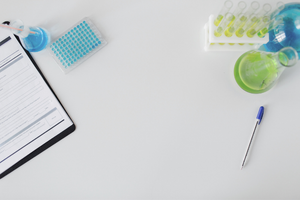Chemicals are an inherent part of the functioning of industrial branches. Although they are used to a different extent depending on the branch, manufacturers, importers as well as downstream users of substances or mixtures are required to ensure the safety of using them. Among chemicals, there is a large number of hazardous substances that require the appropriate classification and form of providing information on related hazards. Therefore, regulations that define common rules for putting into use this type of substances or mixtures are created. One of them is the CLP Regulation. In this article, its meaning and incorporated responsibilities will be explained in more detail.

Meaning of the CLP Regulation
CLP is a regulation on Classification, Labelling and Packaging ((WE) nr 1272/2008). The main purpose of introducing it is to ensure a high level of health and environmental protection, as well as the free transfer of chemical products, substances and mixtures. Its functioning is based primarily on the Globally Harmonized System of Classification and Labelling of Chemicals (GHS). The CLP Regulations shall be binding for all industries, and according to its rules, manufacturers, importers and downstream users of substances and mixtures are required to properly classify, label and pack hazardous chemicals before they are placed on the market.
Main rules of the CLP Regulation
One of the key purposes of the functioning of the rules introduced by the CLP Regulation is to determine whether a given chemical or mixture has properties that qualify it as hazardous. When this criterion is met, it should be properly classified based on the information gathered, i.e. on toxicological data. If the substance or mixture meets the conditions of a given classification, then in the next step the class and the category of related hazards should be assessed. These classes divide the hazards into physical, health and environmental as well as other hazards.
Information on the hazards of substances or mixtures that have been classified should be communicated to the rest of the supply chain, including consumers. One of the most important ways is to label the chemicals properly, concerning the hazards related to their use. It is placed on the labels or in the safety data sheets. This draws users’ attention to potential threats and the need to manage the related hazard. Among the elements used for marking according to the CLP regulation, we can find signal words and pictograms specifying the type of hazard. We can also find here some standard phrases that indicate the type of a given hazard and methods of preventing it, as well as the methods of storage and disposal of substances for each class and category of hazard.
CLP also sets general packaging standards to help ensure the safe supply of chemicals. The regulation is also the legal basis for much legislation related to the risk management of chemicals.

Procedures contained in CLP
The CLP Regulation also includes several important procedures that provide a uniform procedure related to the use of chemical substances or dangerous mixtures.
- Harmonised classification and labelling – in order to ensure proper risk management for the entire European Union, the procedure of classification and labelling of hazardous chemicals has been harmonised.
- Alternative chemical names in mixtures – this procedure allows suppliers to request the use of an alternative chemical name for a substance that is contained in a mixture. This procedure is used to protect the confidential nature of business operation and rights to intellectual property.
- C&L list – the procedure imposes on manufacturers and importers an obligation to notify information related to the classification and labelling of substances placed on the market in the C&L list, maintained by ECHA.
- Poison treatment centres – such a titled annex, which can be found in the CLP Regulation, obliges to provide harmonised information to relevant entities (poison treatment centres) in EU countries that can use it in an emergency. The attachment specifies the so-called UFI, that is, the identifier of the active form, which binds the mixture to be placed on the market, and the information made available in specific health emergencies.
The CLP Regulation is an important set of obligations and other regulations that support the protection of human health and the environment. By complying with the rules in force in regulations such as CLP, GHS and REACH, it becomes safer to use hazardous chemicals or mixtures, which are still essential for many processes. Education in this field is very important for the functioning of the chemical industry as one of the main branches of global industry.
- https://www.gov.pl/web/chemikalia/clp
- https://echa.europa.eu/pl/regulations/clp/legislation